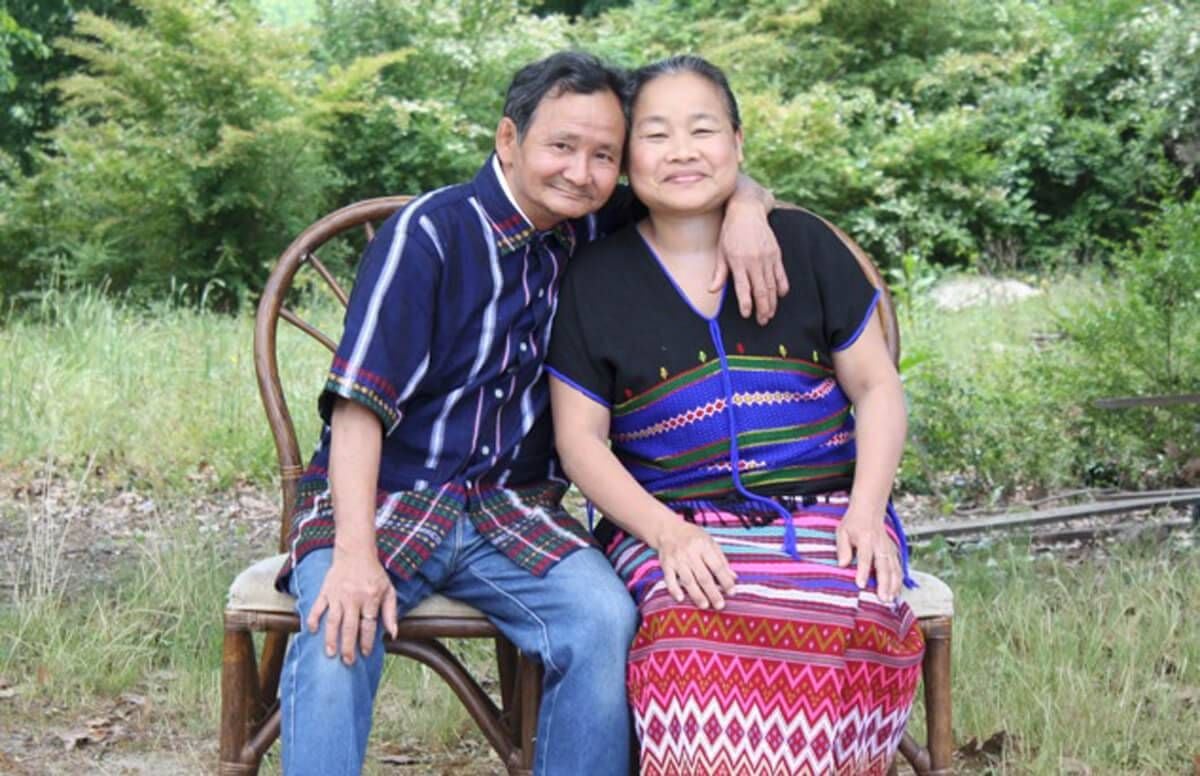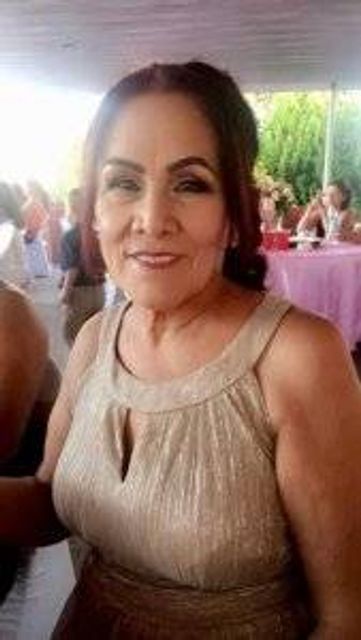Health Needs of Older Rural Immigrants Often Overlooked
And many are unaware of the health services that do exist
(Editor’s note: This story is part of a special report for The John A. Hartford Foundation.)

Micaela Rios, 64, who immigrated to rural western Kansas from Mexico 20 years ago, has a difficult job in a meatpacking plant. After years of packing beef in cold, wet conditions, she developed arthritis and high blood pressure. When she was 60, she had a heart attack.
Many immigrants and refugees work alongside her, some of them older than she, Rios said. Despite the arduous work, she feels lucky that the job comes with health insurance. She hopes to retire once Medicare kicks in.
“One reason she hasn’t retired is because of her health insurance,” said her daughter, Karla Davila, who acted as her mother’s interpreter for this interview. “If it were up to me, she wouldn’t be working now. If I could provide that for her, I definitely would.”
Asked if she can communicate with her health providers, Rios said that most have Spanish-speaking staff. But during our interview, as her daughter was talking, Rios tried to make an appointment with the cardiologist and failed because of the language barrier. As in many rural communities, specialists are scarce, and the cardiologist comes to the area only once a month.

Older Immigrants' Health Care Needs Often Overlooked
Rios is among a group whose health care needs are often overlooked — older immigrants and refugees in rural communities. Little research has been conducted on this population nationally; the vast majority of immigrants and refugees are younger and live in urban areas.
But case studies show that although their needs vary considerably, older rural immigrants commonly face barriers of language and culture as they try to navigate a complex medical system and access transportation.
Davila, who works as a bilingual community liaison at Kearny County (Kansas) Hospital, sees older immigrants who aren’t as fortunate as her mom. Many don’t have health insurance and, if they are undocumented, are not eligible for Medicaid or Medicare. Unlike her mother, who has a car, many lack transportation and put off going to a doctor.
“They don’t have the resources, so they pay out of pocket or else they aren’t able to be seen,” she said. “I know a clinic that won’t see you if you don’t have a Social Security number.”
When Davila's mother had a heart attack, she had to be airlifted to a larger hospital four hours away. Her insurance covered most of it, but Davila has seen uninsured immigrants owe up to $40,000 for an airlift.
A Hospital With a Mission
One health center is making a concerted effort to serve its immigrant clients.
Kearny County Hospital is in Lakin, Kansas, the 10most remote town in the nation, among those with a population of 1,000 to 5,000. The surrounding area draws residents from nearly 30 nations, who, like Rios, come for meatpacking jobs.
“Our workforce mirrors the local population,” said hospital CEO Benjamin Anderson. The hospital serves all, regardless of ability to pay, and provides free language translation services. In addition, it has received national acclaim for a policy of granting doctors 10 weeks’ vacation to do international service trips. “They’re choosing to spend their vacation time where our newcomers are from — Rwanda, Uganda, Kenya, Haiti, Somalia — all over the place. We attract people who are motivated to relieve suffering,” says Anderson.
In 2016, the hospital partnered with researcher Judy Johnston of the University of Kansas Medical Center to conduct a community survey.
“The feedback we got was surprising,” said Anderson. “Hispanics wanted more services, [especially] support for caregivers at home, mental and behavioral health treatment and systems for finding healthy food.” The hospital responded with a three-year plan that includes neighborhood greenhouses, improved walkability and integrating mental health services into primary care.
Rural Immigrants Are Not Always Aware of Services
Kendal Carswell, who leads the hospital’s Pioneer Care Advocacy Team that coordinates social services, said many of its older immigrant patients are unaware of available resources.
For example, Meals on Wheels and the services of the county health department are accessed through the senior center. But “if there’s a language barrier, which there probably would be in the senior center, they wouldn’t feel comfortable coming” and might miss out on the information, Carswell said. His department helps with transportation to medical appointments, as well as partial payment for medications or mental health and dental services.
As older immigrants need more support, they typically expect family members to care for them, rather than move to long-term care settings, “even if it places an incredible burden on the family,” said Carswell. This can be especially difficult when one older person develops dementia and the caregiving spouse then has a medical issue.
Refugees Arrive with Additional Trauma
Refugees are forced to flee their home country, many times to camps or another country of asylum. Less than 2 percent are permanently resettled in a higher-income country.
“With that comes the trauma of experiencing war, displacement and loss of social ties and family members,” said Hafifa Siddiq, a doctoral candidate at UCLA School of Nursing, who has conducted research with refugee women over 50 who have resettled in San Diego County, Calif.
Family members or the refugees themselves may have survived torture.
Some older refugee women, who are dependent on family members, are fearful of leaving their homes due to frailty. They may become socially isolated and experience unaddressed mental health issues.
"If this happens in urban San Diego," said Siddiq, “I can imagine how much more difficult it may be for older women in a rural setting, where access to services, in general, are further away. There’s a need for the medical community to have an increased understanding of this population’s needs so that we may be able to better address them.”
Medical staff also need to know how health decisions are made in other cultures. Refugee women she has interviewed, mostly from majority-Muslim countries, have a more “collectivist” worldview, Siddiq said.
“In our medical system, we value individualism and autonomy,” she said. “For us, that’s an ethical standpoint. Through interviews with refugee women, I found that they make health decisions with family members, specifically with gatekeepers for the family. There is a lot that we still need to understand about refugees, their health and their health behaviors."
A Rural Refugee Success Story
In the tiny rural community of Vesta, Ga., a group of Karen (pronounced kuh-REN) refugees, an ethnic group from Thailand and Burma, have created a thriving community that embraces its elders, according to Daniel Gilhooly, an assistant professor at the University of Central Missouri who has researched Karen refugees for many years. [Two of the Karen refugees are pictured above.]
This group of Karen refugees, who have an agricultural background, sought a rural area for resettlement. In Georgia, they were aided by a local Baptist church and Jubilee Partners, a Christian service group that provided considerable support, including transportation to medical appointments, job placement, language classes, housing and church meeting space.
“The church is the center of Karen life, especially in that particular community,” Gilhooly said. These refugees have managed to build their own small Baptist church and are now working on new sports fields and a mission center.
Most older Karen refugees either have family members nearby or are considered to be “grandparents” by other Karen. Between that and the church, they are more socially connected than many refugees, Gilhooly found.
Diabetes, Mental Health Problems Persist
But health remains a challenge.
The Karen balance traditional herbal medicine for minor complaints with Western medicine. One common problem is “the poor dental health of elderly Karen across the [U.S.],” said Gilhooly. “That is due in large part to chewing betel nut, which turns the teeth black.” They also have high rates of type 2 diabetes and high blood pressure. When he visits their homes, “they all have cases of soda,” and childhood obesity is surging.
There is also stigma about seeking mental health services. “With both Somalis and Karen, despite the fact they’ve been through so many traumas, it’s culturally shameful to bring it up or acknowledge you might be having [post-traumatic stress disorder],” Gilhooly said.
“With the older Karen, the biggest challenge is resistance to going to the doctor,” he added. “They don’t want to be a burden on their kids by asking them to take them to the hospital. They tend to wait until their symptoms are so bad, they have no alternative.”

The John A. Hartford Foundation is a private, nonpartisan, national philanthropy dedicated to improving the care of older adults. The leader in the field of aging and health, the Foundation has three priority areas: creating age-friendly health systems, supporting family caregivers, and improving serious illness and end-of-life care.

